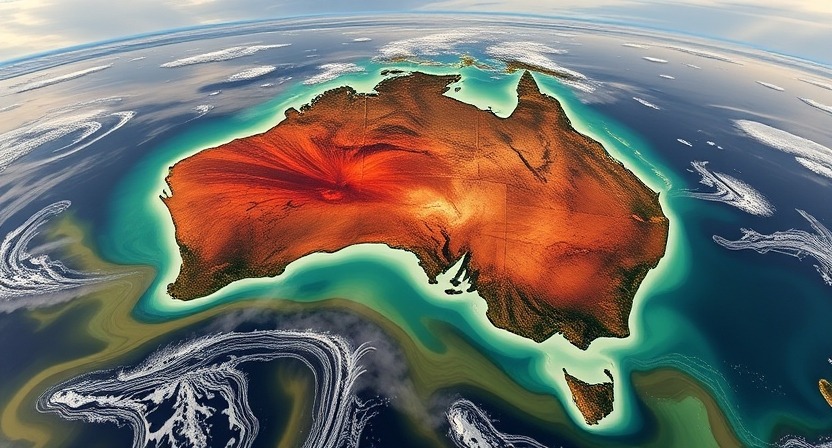The State of the Climate 2024 Report, released by CSIRO and the Bureau of Meteorology, provides a clear snapshot of Australia’s major climate changes. The findings highlight a country in profound environmental shifts, driven by global climate trends and localized factors. From prolonged droughts in the south to rising ocean temperatures, these changes demand urgent attention and action.
Prolonged Droughts in the South
Southern Australia is grappling with extended periods of drought. Rainfall patterns have shifted dramatically, leaving many regions drier than ever before. This prolonged lack of water affects not only agriculture but also water supplies for cities and communities.
The Impact on Agriculture
Farmers in southern areas face growing challenges as crops fail and livestock struggle in harsher conditions. This not only threatens food security but also puts immense pressure on rural economies.
What’s Driving These Changes?
Scientists attribute these changes to a warming climate, which is altering weather systems across the country. The southern regions are particularly vulnerable to these shifts, with less frequent and more erratic rainfall.
Rising Rainfall in the North
In contrast, northern Australia has seen increased rainfall, leading to different but equally significant challenges. While more water might seem like a blessing, it can also mean a higher risk of flooding and damage to infrastructure.
Balancing the Deluge
Communities in the north must now prepare for more frequent and intense storms. This poses threats to homes, roads, and essential services, emphasizing the need for robust infrastructure to handle extreme weather.
A Changing Landscape
The rise in rainfall is also reshaping northern ecosystems. Wetlands are expanding, and some species are thriving, but others are struggling to adapt to these rapid changes.
Ocean Temperatures Rising at Alarming Rates
One of the most concerning findings from the report is that ocean temperatures around Australia are rising at twice the global average. This warming trend has far-reaching consequences for marine life, coastal communities, and industries like fishing and tourism.
The Threat to Marine Ecosystems
The Great Barrier Reef, a global icon and biodiversity hotspot, is under severe stress from more frequent marine heatwaves. Coral bleaching events are becoming common, threatening the delicate balance of this ecosystem.
Impacts on Fisheries
Warmer waters are also pushing fish stocks to new locations, disrupting traditional fishing patterns and impacting livelihoods. Coastal communities dependent on fishing are feeling the economic strain.
Urgent Call for Adaptation
The State of the Climate 2024 Report doesn’t just present problems—it underscores the urgent need for solutions. Adaptation is critical to addressing these challenges and ensuring communities, ecosystems, and industries can survive and thrive in a changing climate.
Integrating Climate Risk into Planning
One of the report’s key recommendations is to incorporate climate risk into planning and infrastructure development. This means designing cities, roads, and buildings that can withstand extreme weather events, such as floods, storms, and heat waves.
Supporting Local Communities
Adaptation efforts must also focus on supporting vulnerable communities. Farmers, coastal towns, and Indigenous populations need resources and strategies to cope with these changes.
Investing in Renewable Energy
Transitioning to renewable energy sources can help reduce greenhouse gas emissions, one of the root causes of climate change. By investing in solar, wind, and other clean energy technologies, Australia can play its part in global efforts to limit warming.
What Can Individuals Do?
While large-scale changes are essential, individuals can also contribute to climate adaptation and mitigation.
- Conserve Water: Use water wisely to ease pressure on drought-affected areas.
- Support Renewable Energy: Choose green energy options for your home or business.
- Reduce Waste: Cut down on single-use plastics and support recycling initiatives.
- Stay Informed: Understanding the impacts of climate change helps you make better decisions and advocate for action.
Time to Act is Now
The State of the Climate 2024 Report powerfully reminds us of Australia’s pressing climate challenges. The signs are clear from the drought-stricken south to the rain-soaked north and the warming oceans in between: climate change is reshaping our land, seas, and skies.
The report’s findings underline the need for urgent action at all levels—government, industry, and community. By embracing adaptation strategies and supporting sustainable practices, Australia can face these challenges head-on and protect its unique landscapes and livelihoods for future generations.







